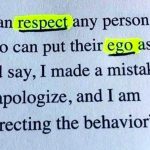Introduction: The Allure of Protectionism
The United States has a long history of using tariffs and trade barriers to shield domestic industries. This policy is often justified as a defense of national prosperity. From Alexander Hamilton’s 18th-century advocacy for “infant industries” to the Trump-era tariffs and the Biden administration’s green subsidies, protectionism has cyclically reemerged as a tool for economic control. Yet, this approach raises critical questions about whom such policies truly protect. By prioritizing corporate interests over individual rights—through subsidies, tariffs, and legal frameworks that empower businesses—governments risk undermining the foundational principles of free enterprise and equitable governance.
Historical Roots: Protectionism as a Double-Edged Sword

- The Infant Industry Argument
Alexander Hamilton’s 1791 Report on Manufactures laid the groundwork for American protectionism. He argued that tariffs and subsidies were necessary to nurture nascent industries against British dominance. While these policies aimed to foster economic independence, they also entrenched political corruption. This occurred as industries lobbied for preferential treatment. By the 19th century, tariffs became a battleground between Northern industrialists and Southern agrarian states. This culminated in protectionist rates as high as 40–44% during the Civil War. The tariffs funded infrastructure and military efforts. - The Smoot-Hawley Disaster
The 1930 Smoot-Hawley Tariff Act, which raised duties on over 20,000 imports, exemplifies protectionism’s unintended consequences. It was intended to shield farmers and manufacturers during the Great Depression. However, it triggered global retaliation, collapsing international trade by 66% and deepening economic misery. Even Henry Clay’s “American System” of tariffs and infrastructure, often romanticized by modern national conservatives, failed to empirically drive growth. Instead, population expansion and technological innovation were the true engines. - Post-WWII Shift to Free Trade
After 1945, the U.S. embraced multilateralism through the General Agreement on Tariffs and Trade (GATT). The country recognized that protectionism stifled global recovery. This era saw unprecedented economic growth, with trade lifting over 1 billion people out of poverty worldwide. Yet, the pendulum has swung back in recent decades, with administrations leveraging tariffs as both economic shields and political tools.
The Modern Era: Tariffs as Funding and Defense
The current administration’s protectionist strategy mirrors historical patterns but with new complexities:
- Revenue Generation: Historically, tariffs funded up to 95% of federal revenue in the 19th century. Today, proposals to use tariffs as a primary funding mechanism risk repeating past mistakes. For instance, Trump’s 2018–2019 trade war with China imposed $450 billion in tariffs. This cost U.S. consumers $620,000 per job “saved” in protected industries.
- Defensive Industrial Policy: The Biden administration’s Inflation Reduction Act (IRA) and “Buy America” rules aim to bolster green industries and reduce reliance on Chinese supply chains. However, such measures face WTO challenges and risk fragmenting global trade networks. This is critical for sectors like semiconductors, where decoupling could cripple innovation.
- Corporate Welfare: Steel tariffs, a recurring theme in U.S. trade policy, illustrate how protectionism often benefits concentrated industries at public expense. Despite claims of saving jobs, steel users (e.g., automakers) employ far more workers and bear higher costs. Meanwhile, consumers face inflated prices.
The Misplaced Priority: Corporations Over Individuals
The U.S. Constitution’s original intent was to protect individual liberties and foster free enterprise. Yet, legal and policy frameworks increasingly favor corporate interests:
- Corporate “Personhood” and Legal Supremacy
The 1819 Dartmouth College v. Woodward ruling established corporations as private entities with constitutional protections, shielding them from state interference. Later, the 14th Amendment’s Due Process Clause was twisted to grant corporations “rights” like free speech (e.g., Citizens United v. FEC), enabling them to influence politics and override local governance. Municipalities, by contrast, lack similar autonomy, often barred from regulating corporate activities like waste imports or mining. - The Cost to Individuals
- Consumers: Tariffs function as regressive taxes, disproportionately harming low-income households. For example, U.S. steel tariffs raised prices for manufacturers and consumers alike, with minimal gains for protected industries.
- Workers: While unions like the United Auto Workers (UAW) have historically supported protectionism, their influence has waned. Only 6% of private-sector workers are now unionized, leaving most vulnerable to job losses from retaliatory tariffs or automation.
- Small Businesses: Heavy regulations and litigation risks stifle entrepreneurship. The U.S. Chamber of Commerce’s Small Business Bill of Rights emphasizes freedom from government overreach. Yet protectionist policies often entrench monopolies and limit competition.
- Erosion of Democratic Governance
The fusion of corporate and state power undermines self-determination. For instance, the WTO’s Government Procurement Agreement exempts state-level “Buy America” rules, allowing federal policies to override local priorities [citation:43]. Meanwhile, corporate lobbying distorts trade policy. This is seen in the logrolling that transformed the 1930 Smoot-Hawley Act from agricultural relief to an industry-wide tariff frenzy.
Conclusion: Reclaiming Government’s Role
Protectionism’s cyclical resurgence reveals a persistent fallacy: that governments must choose between shielding industries and fostering free markets. In reality, the choice is between prioritizing concentrated corporate power or individual rights. Historical lessons are clear:
- Tariffs and subsidies often fail to achieve their aims while enriching politically connected industries.
- Legal frameworks that elevate corporations to “persons” distort democracy and hinder community self-governance.
- Trade liberalization, despite its disruptions, remains the most proven path to broad-based prosperity.
To realign governance with its foundational purpose, policies must prioritize transparency, enforce antitrust laws, and dismantle legal structures that conflate corporate welfare with public good. Only then can the government fulfill its mandate: to protect individual rights, not business interests.

Bibliography
Cato Institute. The Problem of the Tariff in American Economic History, 1787–1934. Accessed May 23, 2023. https://www.cato.org/publications/problem-tariff-american-economic-history-1787-1934.
Citizens United v. Federal Election Commission, 558 U.S. 310 (2010).
Dartmouth College v. Woodward, 17 U.S. (4 Wheat.) 518 (1819).
Hamilton, Alexander. Report on Manufactures. Philadelphia: U.S. Government Printing Office, 1791.
U.S. Chamber of Commerce. Small Business Bill of Rights. Washington, D.C.: U.S. Chamber of Commerce, 2023. https://www.uschamber.com/small-business/small-business-bill-of-rights.
United States Congress. Inflation Reduction Act of 2022. Public Law 117-169, 136 Stat. 1818 (2022).
United States Congress. Tariff Act of 1930 (Smoot-Hawley). Public Law 71-361, 46 Stat. 590 (1930).
World Bank. “Protectionism Is Failing to Achieve Its Goals and Threatens the Future of Critical Industries.” August 29, 2023. https://www.worldbank.org/en/news/feature/2023/08/29/protectionism-is-failing-to-achieve-its-goals-and-threatens-the-future-of-critical-industries.
/run/media/bangy/Video/OLD/5-4-2025/aRideWithMe5-9-2025.mkv
Visibility: Mostly Cloudy / Rain
*GPS Coordinate Data Provided on bottom left corner with date and speed*
Destinations in West Virginia by appearance:
Tornado
Saint Albans (7:00)
*Does anyone know anything about the house just as you enter Saint Albans on Ferrel Road?* (thumbnail @ 7:13)
Armstrong Tunnel (12:20)
Nitro
Cross Lanes
Nitro Marketplace (26:30)
Presidio Point/Place (35:00)
Scott Depot (1:07:00)
Empire Drive Mobile Home Park – Strawberry Road (St. Albans) (1:58:30)
Jefferson
South Charleston (2:19:30)
Listen while you ride: My Spotify Playlists
https://open.spotify.com/playlist/5FI2WfzKqFIz5dD0BOA1iw?si=4f12084e12b247ec – Mix
https://open.spotify.com/playlist/5IWoDtlir7k6eww0PNVdGh?si=dca253ebf4e94ac1 – Chill
https://open.spotify.com/playlist/4TNiUuJHvogwtk7ZxWoOpl?si=d4594c2bf5ff4328 – Upbeat


